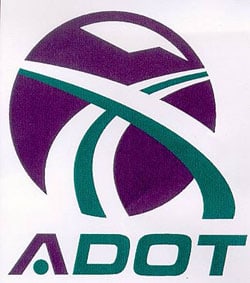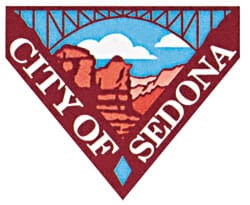Glistening rimes of ice turned to liquid crystal, melted by the early morning sun as hike leader Jack Conklin pointed visitors toward the Mogollon Rim, telling them stories about Louis Boucher, hermit of the Grand Canyon.
Listening intently were two women from Germany, a family of four from Phoenix and one man from Colorado, the first of dozens of people arriving at Red Rock State Park early on Feb. 21.
At the same time, a band of early-morning birdwatchers followed hike leader John Moore across Oak Creek, pausing on Kingfisher Bridge to look at dappled sycamores where lesser goldfinches, a Northern flicker, Western bluebirds and Say’s phoebes were preening, silhouetted against the sky.
Hailing from Tobermory, Canada, Seattle, Wash., Tucson and Sedona, the binocular-raising, feather-seeking visitors continued on their way, heading up the path toward House of Apache Fires.
Behind them came several families: a threesome from St. Charles, Mich., a couple from Boston, Mass., two people from Portland, Maine, two couples from Colorado, a family of four Eastern Indians, and a local couple heading out for an all-day hike on the Turkey Creek Trail.
Visitors to Jerome State Park, Tonto Natural Bridge and McFarland State Bridge weren’t so lucky, shut out by the Arizona State Parks Board who voted to temporarily close them for repairs at the Feb. 20 board meeting.
Although Red Rock State Park wasn’t closed, layoffs have left Park Manager Gary Arbeiter with only five people on staff.
The ranger has worked for Arizona State Parks since 1990 and at Red Rock State Park since 1997.
“We have been underfunded for years,” Arbeiter said. “There is no fluff out here.”
So far, he believes visitors to his park have been unaffected due to extraordinary efforts and sacrifices by the remaining staff and due to an unusually large and dedicated corps of volunteers.
“Before the furloughs we were at about 50 percent staff and 50 percent volunteers,” Arbeiter said. “Now it’s more like 40 percent staff, 60 percent volunteers.”
Although they’ve been able to maintain what he described as “an acceptable level of service,” Arbeiter doesn’t think the present arrangement is sustainable once the park’s busy season begins in March.
“We’re open 12 hours a day and we’re running both an entry station and the visitor center,” Arbeiter said. “That’s a total of three people per day just for those positions.”
The manager’s biggest concern is the uncertainty.
“Visitors book their weddings and picnics here a year in advance,” Arbeiter said. “We have 30 weddings scheduled between now and July 1, and I intend to honor those commitments.”
At $50 for four hours, the park is a bargain for brides who want spectacular backdrops for their photographs.
The only other cost is admission to the park which is $7 per carload, not much considering the level of expertise and attention visitors enjoy.
“Three of our five staff have national interpretive training,” Arbeiter said. “They make positive connections with the folks who visit here, passing on their knowledge.”
Judy and Daryl Cowell of Tobermory, Ontario, are among those enjoying their experience at the park, having a close look at an Anna’s hummingbird.
Another birder is Carolyn Leaver who’s staying in Sedona for four months, a welcome respite from the winter in Seattle.
Non-birders Patrick Beauchamp and Phyllis Russell are in the red rocks on vacation, visiting Tuzigoot earlier in the week and taking the Verde Valley Railroad trip to Perkinsville.
Using the park as their trailhead for Turkey Creek, locals Celeste and James Cates have their hiking sticks at the ready.
“We like it here because it has a nice secure parking lot,” Celese said. “Our windows were smashed out when we parked
at one of the forest service trails.”
The Cates consider the park a critical outlet for tourists, particularly when the forest is closed due to fire restrictions.
“It’s the only place that remains open to the tourists,” Celeste said.
With three out of the four state parks in Yavapai County in jeopardy, she feels the area is being unjustly targeted.
“This would have an enormous [financial] impact,” Celeste said.
James Johnson of Cornville is a frequent visitor to the Verde Valley’s state parks, along with his children.
“Without Dead Horse Ranch State Park, many parents of small kids wouldn’t have a safe place to take their kids to ride bicycles and hike,” Johnson said. “Most every street in this area is nothing more than a corridor, functionally a drag strip. With 4 million annual tourists and people running late to work, it’s even scary for a veteran cyclist who’s raced bicycles in major cities across the U.S.”
Johnson described Dead Horse Ranch State Park as a “patrolled dead-end that offers a 15 mph safe haven” for pedestrian activities as well as offering horseback riding.
“Both my children learned to ride there. I’ve talked to other parents and I’m not alone. It’s our only good choice,” Johnson said.
Although his children get plenty of hands-on experience in nature, Johnson worries that others may soon be deprived of learning preservation and conservation.
“The structured access that state parks provides is of immeasurable benefit to us,” Johnson said.
Back at the Miller Visitor Center, the families from Maine and India are taking photographs, framed against the Seven Sisters rock formation.
Both groups are in the area just for the day, stopping on their way to the Grand Canyon.
In the meantime, Arbeiter is sitting tight.
“We’re not making any decisions or changes until we see what happens next,” Arbeiter said. “I don’t think the board’s first preference is closures; we’ve gone two rounds now without being.





















